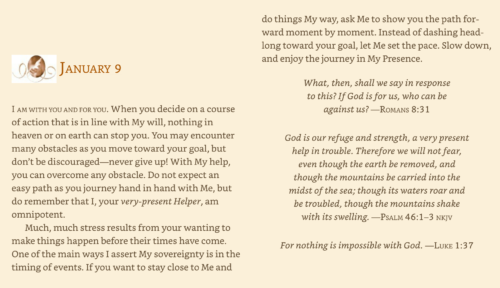The Mystery of the Trinity
This week’s Daily Meditations circle around the Mystery of the Trinity, the Christian faith’s central and fundamental description of God. Father Richard Rohr writes:
The notion of God as Trinity is the foundation of all Christian thought, and yet it never has been—not truly! Our dualistic minds largely shelved the whole thing because we simply couldn’t understand it. Most Christians do not consciously deny the Trinity, but as Karl Rahner (1904–1984) wrote, “We must be willing to admit that, should the doctrine of the Trinity have to be dropped as false, the major part of religious literature could well remain virtually unchanged.” [1] What a sad statement on our fundamental understanding of God!
The Trinity reveals God more as a verb than a noun, but we rarely speak about God that way in either our preaching or our prayers. God is three “relations,” which itself is mind-boggling for most believers. Yet that clarification opens up an honest notion of God as Mystery who can never be fully comprehended with our rational minds. God is dynamic—a verb rather than a static name. God is Interbeing itself, and never an isolated deity that can be captured by our mind.
Christians believe that God is formlessness (the Father), God is form (the Son), and God is the very living and loving energy between those two (the Holy Spirit). The three do not cancel one another out. Instead, they do exactly the opposite. Recognizing the Trinity as relationship itself opens conversations with the world of science. This surprising insight names everything correctly at the core—from atoms, to ecosystems, to galaxies. The shape of God is the shape of everything in the universe! Everything is in relationship and nothing stands alone. The doctrine of the Trinity defeats the dualistic mind and invites us into nondual, holistic consciousness. It replaces the argumentative principle of two with the dynamic principle of three. It brings us inside the wonderfully open space of “not one, but not two either.” Sit stunned with that for a few moments.
The most ancient and solid theology of the Trinity proceeds from the Cappadocian (Eastern Turkey) Fathers of the third and fourth centuries and is then adopted by later Councils of the Church. Trinitarian theology says that God is a “circular” rotation (perichoresis) of total outpouring and perfect receiving among three intimate partners. Historically, most of us, except for mystics, preferred the pyramid model with God the Father at the top, which then got imitated and promoted all the way down! This is no exaggeration.
As Catherine LaCugna (1952–1997) presented in her monumental study of the Trinity [2], any notion of God as not giving, not outpouring, not self-surrendering, not totally loving is a theological impossibility and absurdity. God only and always loves. You cannot reverse, slow, or limit an overflowing waterwheel of divine compassion and mercy and a love stronger than death. It goes in only one, constant, eternal direction—toward ever more abundant and creative life! This is the universe from atoms to galaxies.
Jesus in the Trinity
Father Richard points out how we misunderstand Jesus and his teachings when we think of him apart from the Trinity.
When we try to understand Jesus outside the dynamism of the Trinity, we do not do him or ourselves any favors. Jesus never operated as an independent “I” but only as a “thou” in relationship to his Father and the Holy Spirit. He says this in a hundred different ways—the “Father” and the “Holy Spirit” are a relationship to Jesus. God is love, which means relationship itself (1 John 4:7–8).
Christianity lost its natural movement and momentum—flowing out from and returning to that relationship—when it pulled Jesus out of the Trinity. It killed that exciting inner experience and marginalized the mystics who really should be center stage. Jesus is the model and metaphor for all of creation being drawn into this infinite flow of love. Thus he says, “Follow me!” and “I shall return to take you with me, so that where I am, you may be also” (John 14:3). The concrete, historical body of Jesus represents the universal Body of Christ that “God has loved before the foundation of the world” (John 17:24). He is the stand-in for all of us. The Jesus story, in other words, is the universe story. He never doubts his union with God, and he hands on union with God to us through this fully participatory universe.
Many of the Fathers of the church believed in an ontological, metaphysical, objective union between humanity and God, which alone would allow Jesus to take us “back with him” into the life of the Trinity (John 17:23–24, 14:3, 12:26). This was how real “participation” was for many in the early church. It changed people and offered them their deepest identity and form (“trans-formation”). We had thought our form was merely human, but Jesus came to show us that our actual form is human-divine, just as he is. He was not much interested in proclaiming himself the exclusive son of God. Instead, he went out of his way to communicate an inclusive sonship and daughterhood to the crowds. Paul uses words like “adopted” (Galatians 4:5) and “co-heirs with Christ” (Romans 8:17) to make the same point.
“Full and final participation” was learned from Jesus, who clearly believed that God does not so much promise us a distant heaven but invites us into the Godself as friends and co-participants. Remember, I am not talking about a psychological or moral wholeness in human persons, which is never the case, and why most people dismiss this doctrine—or feel incapable of it. I am talking about a divinely implanted “sharing in the divine nature,” which is called the indwelling spirit or the Holy Spirit (Romans 8:16–17). This is the foundation on which we must and can build and rebuild a civilization of life and love. Our objective ground is good and totally given!
